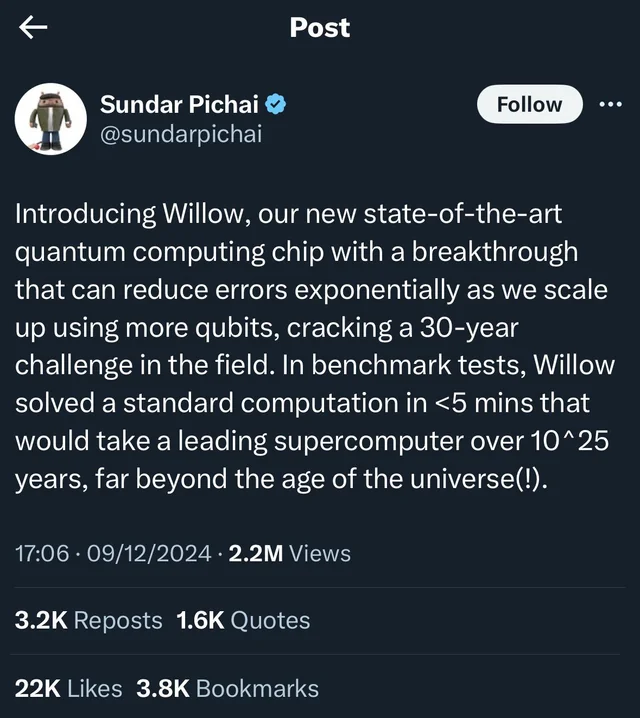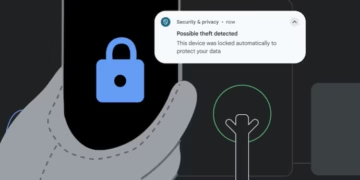SEALSQ Corp (NASDAQ: LAES) announced its development of solutions to address quantum computing challenges through its QUASARS project, focusing on Post-Quantum Cryptography (PQC) and quantum-resistant hardware for IoT and blockchain networks. The company highlighted Bitcoin’s vulnerabilities to quantum computing, particularly in p2pk and reused p2pkh addresses. Current scientific estimates indicate it takes approximately 30 minutes for a quantum computer to hack a Bitcoin signature, compared to Bitcoin’s 10-minute block mining time.
The company outlined potential mitigation strategies, including transferring funds to new p2pkh addresses and implementing consensus-driven ultimatums for moving funds to safe addresses. SEALSQ is developing quantum-resistant cryptographic solutions to ensure blockchain and IoT networks remain secure in the quantum computing era.
- Leading development of quantum-resistant technology for blockchain and IoT security
- Strategic positioning in emerging post-quantum cryptography market
- Current Bitcoin network remains secure against existing quantum computing capabilities
- Identified critical vulnerabilities in Bitcoin’s cryptographic security
- Growing quantum computing threat to blockchain security
- Implementation of solutions requires broad consensus and complex coordination
SEALSQ’s Quantum-Resistant Cryptography for Securing Bitcoin Against Quantum Threats
SEALSQ Corp has invested in innovative quantum-resistant technology to address critical vulnerabilities in blockchain systems, with a special focus on Bitcoin. The increasing power of quantum computers poses significant threats to current encryption methods, potentially impacting Bitcoin’s widely used security models. Particularly, quantum systems endanger public key cryptography by quickly deriving private keys, which could lead to unauthorized access to cryptocurrency funds.
Challenges in Blockchain Security

Bitcoin’s potential vulnerability arises prominently in public key-based addresses, such as Pay-to-Public-Key (p2pk) and reused Pay-to-Public-Key-Hash (p2pkh) addresses. Quantum computers, under current predictions, could compromise Bitcoin signatures in as little as 30 minutes. Since Bitcoin’s block-mining process only takes approximately 10 minutes, this timeline introduces substantial risks. To counteract these challenges, SEALSQ is actively developing post-quantum cryptographic (PQC) algorithms that aim to shield digital assets even when quantum computing capabilities advance further.
Quantum-Resistant Solutions
SEALSQ’s work on improving system security leverages post-quantum technology under its QUASARS project. By integrating quantum-safe cryptographic designs into blockchain technology, they aim to make networks resilient against future quantum attacks. As part of this development, the company is exploring quantum-resistant algorithms that create robust encryption and signature mechanisms.
Some identified strategies include:
- Use of new wallet addresses: Bitcoin holders are encouraged to transfer funds into fresh Pay-to-Public-Key-Hash (p2pkh) addresses. This prevents vulnerabilities linked to previously exposed public keys.
- Consensus-driven upgrades: SEALSQ suggests introducing blockchain-wide agreements to implement stricter quantum-safe protocols.
- Quantum-Safe Key Infrastructure (PKI): Enhancing PKI frameworks to incorporate next-generation security measures designed for post-quantum cryptography ensures trusted data exchanges.
Together, these measures aim to bolster quantum security, ensuring long-term trust in blockchain systems such as Bitcoin.

Developing Advanced Quantum Tools
To achieve enhanced protection, SEALSQ has been focusing on hardware-based cryptographic solutions. Their innovations involve producing quantum random number generators (QRNGs), which generate truly random values for secure encryption. By embedding quantum-safe cryptographic randomness into their platforms, their technology ensures that private keys remain unpredictable, even for advanced computational tools.
In addition to QRNG, advancements in digital signatures contribute to making blockchain transactions more secure. Quantum-resistant digital signatures leverage secure algorithms that are immune to quantum decryption methods, safeguarding sensitive data transfers.
Focused Use in IoT Networks
Beyond Bitcoin, SEALSQ recognizes the significance of securing Internet of Things (IoT) infrastructures. Connected devices, on which many smart systems rely, are equally susceptible to attacks if encryption standards fail. By designing quantum-resistant hardware for IoT, SEALSQ ensures both blockchain networks and IoT setups remain protected against escalating cryptographic threats.
Why Quantum-Resistant Technology Matters
SEALSQ’s vision reflects the global drive toward quantum-safe cryptography. By advancing their solutions, they help mitigate risks posed by malicious actors exploiting future quantum technologies. Such efforts emphasize the importance of quantum-resistant algorithms, particularly in cryptocurrency spaces, where the value of assets depends heavily on their underlying encryption strength.
Their contributions not only address Bitcoin’s challenges but also set a foundation for enhancing security across diverse technological fields, paving the way for widespread adoption of quantum-safe cryptographic methods.
FAQ
How quickly can a quantum computer break a Bitcoin signature based on SEALSQ (LAES)’s findings?
Scientific data referenced by SEALSQ (LAES) suggests that a quantum computer could potentially compromise a Bitcoin signature in roughly 30 minutes, highlighting significant risks for blockchain security.
What Bitcoin weaknesses to quantum computing has SEALSQ (LAES) identified?
SEALSQ (LAES) has pinpointed vulnerabilities within p2pk addresses and reused p2pkh addresses. These flaws expose public keys, enabling quantum computers to calculate private keys and potentially access funds unlawfully.
What measures is SEALSQ (LAES) implementing to defend against quantum threats?
To counter quantum risks, SEALSQ (LAES) is advancing hybrid post-quantum cryptography (PQC) and developing quantum-resistant hardware under its QUASARS project. These innovations aim to secure blockchain and IoT networks against evolving cybersecurity threats.
What immediate steps does SEALSQ (LAES) propose to address quantum risks?
SEALSQ (LAES) recommends moving funds to new quantum-safe p2pkh addresses. Additionally, they highlight the need for consensus within the community to enforce stricter protocols, ensuring assets are safeguarded in secure locations.
Frequently Asked Questions
What steps are being taken to secure Bitcoin against quantum threats?
Efforts to protect Bitcoin against potential quantum computer attacks include developing quantum-resistant cryptographic algorithms. These approaches aim to replace vulnerable methods like elliptical curve cryptography with advanced, post-quantum solutions. Initiatives, such as SEALSQ’s work on quantum-resistant technologies, focus on safeguarding blockchain networks and digital assets.
How could quantum computing affect the Bitcoin mining process?
Quantum computers are expected to bring significant changes to Bitcoin mining. Their ability to solve mathematical problems at unprecedented speeds might disrupt mining competition by reducing the time needed to validate blocks. However, the exact impact remains uncertain as quantum technology continues to evolve.
When might quantum computers break today’s encryption standards?
Experts estimate that it could take roughly a decade or more for quantum computers to mature enough to break present cryptographic systems. Some research suggests that hacking a Bitcoin signature with advanced quantum technology might only take 30 minutes. The timeline depends on the pace of advancements in quantum hardware and algorithms.
How can existing blockchain systems adopt quantum resistance?

Integrating quantum resistance into current blockchain networks involves updating protocols to include post-quantum cryptography. This process may require reworking aspects like key generation and signature verification to make systems more robust against potential quantum threats. Such upgrades must maintain scalability and efficiency.
What effect will quantum-resistant technology have on Bitcoin security moving forward?
Quantum-resistant technology is expected to enhance Bitcoin’s long-term security by addressing vulnerabilities introduced by advanced quantum computing. Solutions like post-quantum encryption standards are crucial to ensure transactions and private keys remain protected from quantum attacks.
What does quantum computing mean for cryptocurrencies other than Bitcoin?
Quantum computing could impact other cryptocurrencies in similar ways, especially those relying on traditional encryption methods. For instance, altcoins utilizing elliptical curve cryptography may face similar risks. Developing a comprehensive, industry-wide quantum-resistant strategy is essential to protect diverse blockchain ecosystems.






































